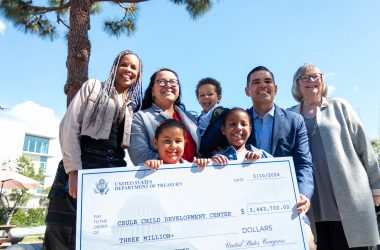A Cal State Long Beach chemistry professor plans to apply his past research to the process of pharmaceutical production with the help of a $60,000 research grant.
The Henry Dreyfus Teacher Scholar Award named assistant chemistry professor Xianhui Bu one of five award recipients nationwide, awarding him the grant.
Along with undergraduates, graduates and research technicians, Bu discovered new forms of porous crystals that have potential for promoting molecular reactions. He began these studies three years ago, after receiving a $676,118 grant from the National Institutes of Health to support his research.
“Without pores, molecules can only react on the external surface of a solid catalyst,” Bu said. “But if you have pores, more internal surface areas would be available.”
He explained that interaction between molecules and the surface of the catalyst promotes many reactions, so high surface area is desirable. Bu said he focuses on the concept of chirality, which means two objects or molecules are non-superposable, or more simply put, they may look like mirror images of each other, but don’t actually display perfect symmetry. People’s left and right hands are an example of two objects exhibiting chirality.
“Usually, when used as pharmaceuticals, one form is good and the other is inactive, since our bodies possess a chiral environment which can tell the difference between the two forms,” Bu said. “In the worst case, the other produces side effects or is toxic.”
Bu intends to apply his discovery to the production of pharmaceutical products. For medicine, only the therapeutic form is desired. However, many medicines are marketed as a mixture of both forms, since it is cheaper.
“It is an additional step and an additional cost to separate the forms,” Bu said.
In order to avoid the extra step, Bu intends to use the porous material as a catalyst to create an environment that is chiral. The chemical reactions that occur in such a chiral environment prefer only one form.
“So far we have made these materials,” Bu said. “The next step is to examine these materials for actual applications to make pharmaceuticals.”
Bu chose to research chemical reactions for medical purposes because he wanted to do something useful for the field. He also chose such for a practical reason.
“It’s easier for you to obtain grants,” Bu said. “I always had this strong desire to produce useful research and high quality publications. You need money for that.”
Bu said he has 11 publications with his undergraduate students. His publications can be found in Science, Nature and Journal of the American Chemical Society, and in 2008 his co-authored journal articles were featured in the Angewandte Chemie (Applied Chemistry) International Edition of the German Chemical Society and Chemical Communications of the Royal Chemical Society.
Bu, who grew up in China, said he always wanted to be a scientist.
“Almost everyone wanted to be a physicist or chemist in 1950s and 60s,” Bu said. “Being a scientist was the dream of most teenagers.”
Bu received his bachelor’s of science from Fudan University in Shanghai, China, in 1985 and attended the State University of New York at Buffalo for his doctorate in 1992.
When he is not busy in the lab, Bu said he enjoys playing tennis with his 13- and 16- year-old daughters.
As to whether they aspire to be scients, Bu said, “they haven’t decided yet.”



